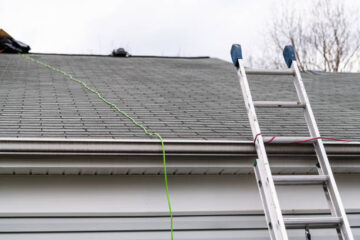While anybody can throw some flowers in a vase, it takes more planning and skill to create a beautiful floral arrangement. It takes some planning and preparation to create a lovely centrepiece and maintain the freshness and vibrancy of the flowers. If you don’t have the time to indulge in DIY floral arrangements then you can always order a flower bouquet in Dubai out for your recipients.
Fortunately, learning how to arrange flowers professionally is not difficult. It may be easy and enjoyable as long as you understand the fundamentals. This tutorial will walk you through the process of making and arranging stunning flowers.
Step 1: Select The Style Of Your Flower Arrangement
Before you go flower shopping, decide on a colour palette. This makes it more likely that the colours you choose will go well together. Monochromatic designs that use several tones of the same hue may be visually appealing. Try using complementary colours that draw attention to one another for a striking effect.
It’s not necessary to choose colours with extreme precision. We advise choosing flowers that are in bloom in your yard or that are accessible in the neighbourhood market.
The secret is to have an open mind and choose what appeals to you. Being too particular might cause you to overlook other lovely possibilities. Choose your favourites and see how they blend together while having varying growth patterns, sizes, and forms.
Step 2: Arrange And Trim Your Flowers
When your flowers arrive at home, avoid the need to arrange them as soon as possible. You must first get them ready to endure longer. Trim the stems of any excess foliage and broken petals. Cut off any undesirable buds that may be present on the same stalk as the completed bloom. After cleaning the stems, cut them again on the diagonal at the bottom. After that, arrange the chopped stems in a vase or pail of water with cut flower food (it doesn’t have to be the final vase).
Step 3: Select A Vessel
Select a vase or container based on the kind of flowers you want to use. For instance, large flowers or long branches may demand a weighted container, yet tulips need the support of a vase with straight sides. You may get a natural effect by using woven baskets instead of conventional vases.
Place a plastic container within the basket to store water and maintain the stability of the flowers. You may recycle a plastic bottle or other packaging or look for one in your kitchen. If necessary, cover the plastic container with moss to conceal it.
Step 4: Get Your Vase Ready
The vase’s preparation is an important step in flower arrangement. Without a strong base, the flowers won’t remain in place, and your arrangement will crumble. Make a floral tape grid over the vase’s opening and insert the stems through the holes to hold the flowers in place. As an alternative, you may keep the stems in place using a floral frog, which is a vessel insert with pins. Even better, you can create your own DIY flowery frog by balling up a little piece of chicken wire.
Step 5: Use Greenery To Make A Base
Start with a foliage basis for your floral arrangement. For this, fern fronds, ivy, and eucalyptus work nicely. To give your arrangement a dual vertical and horizontal presence, place the foliage stems in an inverted triangle. Prior to putting the stems in the vase, don’t forget to trim them again.
Step 6: Include Accent Flowers
Incorporate the focus flowers, which are often the biggest or possess distinctive hues or textures. To create a naturally asymmetrical design, use odd numbers. To avoid making them seem drooping and heavy, avoid arranging them so they protrude straight out on the sides. You can view every angle of your arrangement without having to move the vase by using a lazy Susan.
Step 7: Put Floral Filler
Use smaller flowers and textured pieces to create a focal point around your main blooms. Don’t arrange all of the auxiliary flowers sideways or straight up. To finish the arrangement, see it as a dome and fill in all the angles. To resemble natural clustering, arrange smaller flowers in groups of three or five.
Step 8: Complete The Setup
Add delicate flowers, such as yarrow, sedum, or baby’s breath, to finish off your arrangement. Place them last so that the heavier flowers won’t squash them. Give your arrangement a quick mist of water to simulate fresh dew before putting it on display. To keep the vase hydrated and fresh, keep it filled with water.
Keep an eye for more latest news & updates on Gossips!




